A project isn’t successful just because it’s been completed on time and within budget. There’s another project constraint that is critical to success: quality. Stakeholders aren’t going to be happy if the quality of the product or service doesn’t meet their expectations. So, how can project managers control quality? Quality assurance, that’s how. Let’s start with a brief quality assurance definition.
What Is Quality Assurance?
Quality assurance (QA) is a quality management process that consists of establishing standards, guidelines and procedures to prevent quality issues and maintain the integrity of the product or service throughout its development.
Quality assurance is often confused with quality control (QC), another component of a quality management system. A quality management system is a set of methods and tools that lets organizations manage all aspects of quality management including quality planning, quality assurance, quality control and quality improvement.
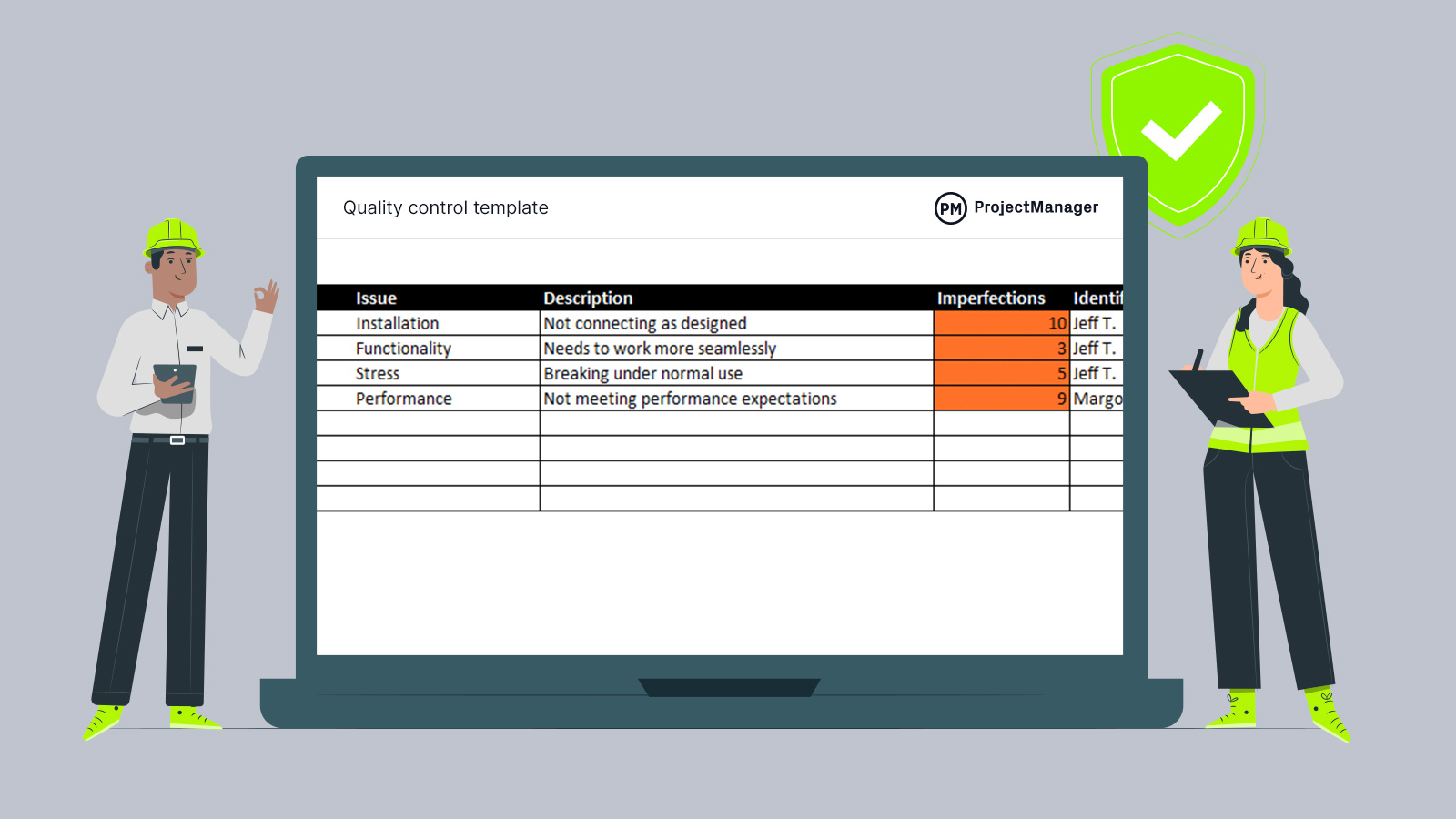
Get your free
Quality Control Template
Use this free Quality Control Template for Excel to manage your projects better.
Quality Assurance vs. Quality Control
While QA and QC are closely linked, they are distinct concepts when it comes to managing both product or service quality. The main difference between QA and QC is that quality assurance focuses on planning to prevent risks that could affect quality during the production of services or goods, while quality control focuses on testing the quality of the output once the product or service has been delivered.
In project management, a quality assurance plan is a proactive approach to process improvement. It helps ensure the right processes, standards and guidelines are in place to meet quality objectives. Quality control procedures, on the other hand, are a more reactive process that consists of looking for defects once the product has already been made.
Quality Assurance Principles
There are two principles to quality assurance. One is “fit for purpose,” meaning the product or service meets its intended purpose. The other is “right first time,” in which any mistakes are immediately addressed.
With the two above principles in play, the goal is to make the product or service work correctly all the time through the management of project constraints. To do so, quality assurance involves the management of the quality of raw materials, assemblies, products and components; services related to production; and the management, production and inspection process.
ProjectManager is project management software that can be used to plan, schedule and track your quality management activities. Plus, you can collaborate with your team to stay on top of your projects, and report on progress to stakeholders with dashboards and reports. Get started today for free.
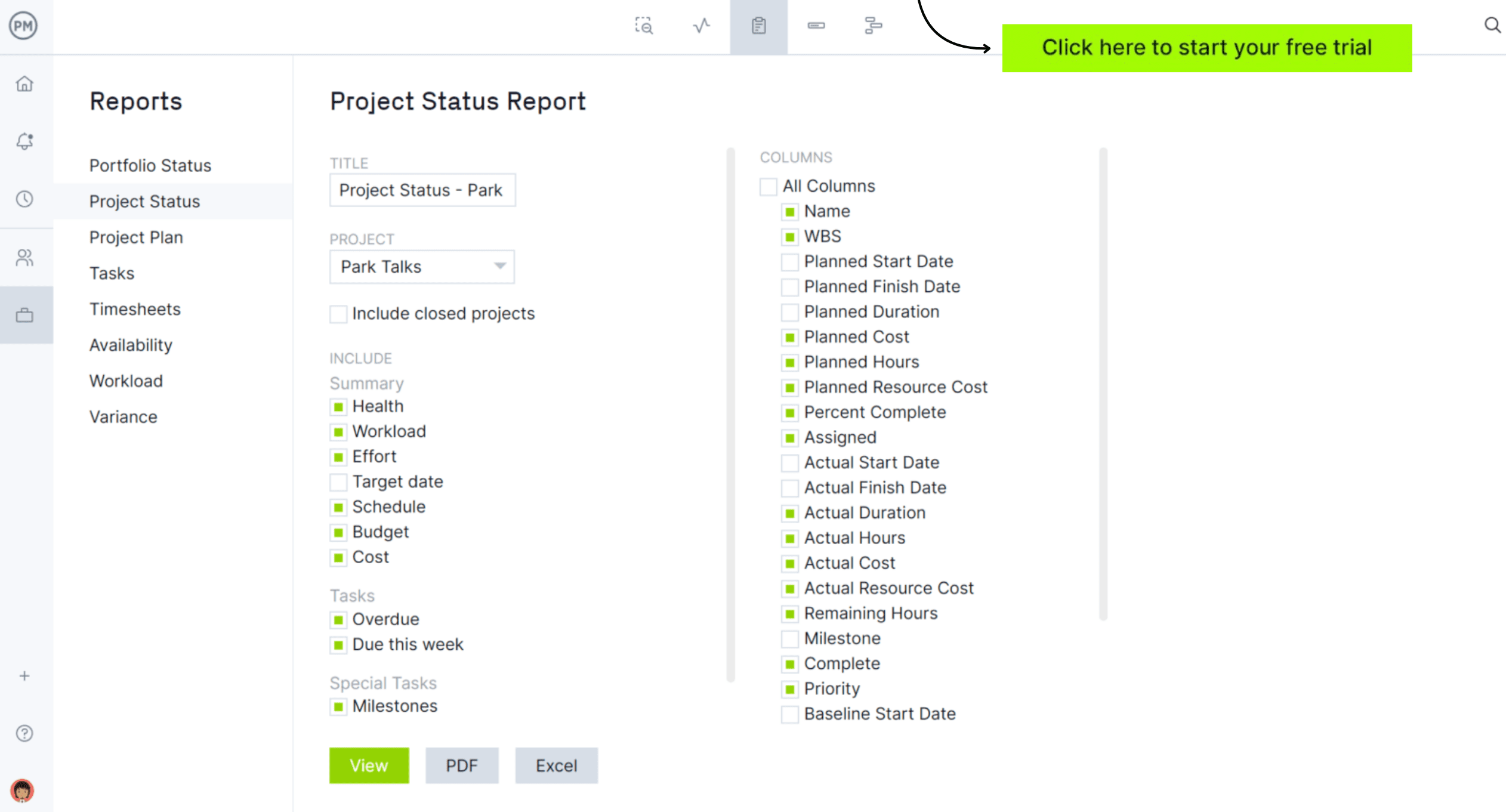
The Quality Assurance Process
If you want to establish a quality assurance program within your organization, here are some steps you can take.
Establish Quality Objectives & Standards
Start by establishing quality objectives and standards. This consists of identifying the goals that a product, service or process must satisfy customer needs and regulatory requirements. These quality benchmarks can help assess the product or service against defined criteria. It lays the groundwork for all of the QA process and guarantees that all future efforts will be directed toward achieving these quality standards.
1. Quality Planning
The next step in the quality assurance management process is quality planning. Here, the strategy for meeting the established objectives and standards is fleshed out. It consists of a quality management plan that details the actions, timelines and resources needed to guarantee that quality is integrated throughout the lifecycle of the project. Quality planning helps identify the metrics that will measure success including customer satisfaction levels and defect rates.
2. Quality Assurance Process Design
The process design and implementation phase follows. It revolves around embedding quality into the systems and workflow that helps govern service or product creation. This is where an organization designs and refines its processes to ensure they follow quality standards and best practices. Different industries have different standards such as coding standards in software development or manufacturing guidelines.
3. Quality Assurance Testing
Testing is the process used to execute a system of quality assurance. It’s used to detect problems in a product or service. The importance of quality testing is obvious: the product or service that’s completed improperly will dissatisfy the stakeholder, but there can also be safety issues that will put people in harm’s way if not addressed.
- Test Case Development: The objective of test case development is to design specific test cases that help determine how the system will be tested. For example, some activities may including writing detailed test cases or scripts that determine what actions should be performed as well as the expected results and the test environment. It also ensures both positive and negative scenarios are covered.
- Test Environment Setup: The goal is to prepare the hardware, software and network configuration that is needed to execute test cases. This involves setting up the test environments, including servers, databases and any needed tools. It also consists of installing and configuring software, establishing test data and verifying that the environment is a reflection of the production environment.
- Test Execution: The objective of the test execution is to run the test cases against the product or system to determine if there are issues. Some example activities include recording the results of tests, executing test cases, documenting bugs or defects and communicating issues to the development team.
- Defect Reporting and Tracking: The goal of this step is to log and manage defects or bugs that were identified during the testing stage. Some activities can include monitoring the status of defects, reporting defects via a tracking system or detailing the severity of the defects.
4. Quality Assurance Monitoring & Control
The next step in the quality assurance process is monitoring and controlling processes. It helps ensure that quality standards are being met throughout the development and production phases. In this stage, it’s important to monitor key performance indicators and other metrics in real time to help the organization detect deviations from quality standards. If correction actions are needed, they can be taken before the final product is impacted.
5. Gather Customer Feedback & Validation
Another critical component of the quality assurance and quality control process is gathering customer feedback and getting their validation. In other words, does the final product or service meet real-world standards and expectations? Feedback is collected directly from customers, end users or clients using surveys, customer reviews, interviews or testing sessions. Organizations can then identify areas of improvement.
6. Quality Assurance Audits
The final step is formal assessments called quality audits and reviews. These are essential to help both processes and products align with an internal or external auditor’s review. They will review the quality management system (QMS) including processes, documentation and results to pinpoint non-compliance areas or areas for improvement. Regular audits help organizations maintain a high level of quality.
Quality Assurance Methods
QA is particularly important in product development and manufacturing. It should be implemented by any business that produces goods or services, and there are different quality assurance methods that have been created over time. Here are some of them, so you can decide which of them is best for your organization.
Total Quality Management (TQM)
Total quality management is a quality assurance approach that consists of developing a company-wide quality management mindset. That means all departments and individuals involved with activities that affect quality management, such as supply chain management or inventory management are trained to maintain quality standards and strive for continuous improvement.

Failure Testing
Failure testing is a simple quality assurance method that tests products by pushing their limits through extreme stress conditions, such as temperature, pressure or tension until they break. This process exposes product flaws. In addition, data is gathered throughout the process so that quality assurance measures can be taken to improve the product.
Process and Product Quality Assurance (PPQA)
This quality assurance approach focuses on setting quality standards and procedures at an organizational level to measure, evaluate and solve quality management issues. This method relies on a thorough gap analysis of the different business processes related to quality assurance.
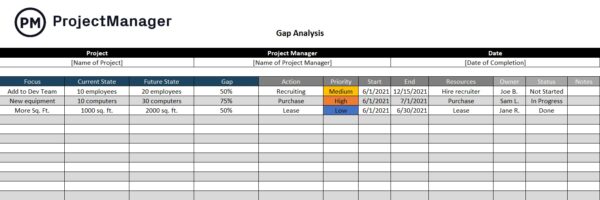
Capability Maturity Model Integration (CMMI)
Capability maturity model integration is a popular method in software development, which first assesses the maturity level of your business when it comes to quality assurance. Then the goal is to train your team members to push through the CMMI maturity stages until you’ve developed a robust quality assurance process.
Statistical Process Control (SPC)
This quality assurance method consists of using various statistical tools to identify quality issues and measure the effectiveness of business processes and teams to then improve any flaws in the production cycle.
Quality Control Template
This quality control template allows you to log any quality issues found as you test the quality of your products. Track important details such as who found the issue, the date when it was found, its priority level and the expected close date.

Quality Assurance Roles and Responsibilities
Quality assurance isn’t a one-man show, it’s achieved through team effort. Here are two key roles and responsibilities when it comes to QA.
Quality Assurance Specialist
A quality assurance specialist, as the title suggests, oversees the QA portion of quality management. He or she collaborates with the quality manager to ensure strategic alignment.
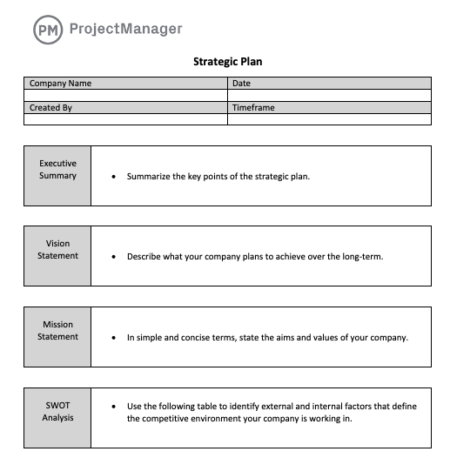
Quality Manager
A quality manager is involved with all areas of a quality management system. Quality managers work closely with different team members to ensure quality assurance aligns with quality planning, quality control, quality improvement and the organization’s strategic goals.
Quality assurance uses a quality system that is set up to implement administrative and procedural tasks, which create goals for the product or service of the project. This provides a systematic measurement and comparison with a standard, along with a monitory of processes and a feedback loop to make sure no errors pass through production. Quality control, however, is primarily just focused on process output.
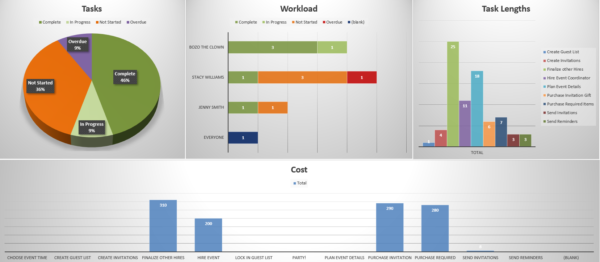
What Industries Can Benefit From Quality Assurance?
Quality assurance has a place in almost all industries, and the use of contractors or consultants to handle quality assurance isn’t unusual.
The Medical Industry
In the medical industry quality assurance is highly important, as a mistake could lead to the loss of human life. Agencies are employed nearly everywhere, from hospitals to laboratories, to make sure their standards are in tune with the industry.
The Aerospace Industry
The aerospace industry has quality assurance but calls it product assurance, which works in tandem with project management and engineering to avoid catastrophic failures that have a human cost. The product assurance department reports to the highest management levels and has its budget.
The Software Industry
In software development, quality assurance is a way to monitor the software development processes. There are many ways that this is accomplished, such as with ISO 9000 or a model such as Capability Maturity Model Integration (CMMI). In some cases, software is used to correct issues.
History of Quality Assurance
Quality assurance isn’t a new concept. You can find evidence of it back in the Middle Ages when guilds maintained the quality of goods and services of their members by setting quality standards that were a requirement for guild membership.
The duties of quality control were also placed on royalty, to maintain their warships, for example. They also helped standardize the training for navies to make sure long sea journeys were as safe as possible.
The Industrial Revolution revolutionized quality assurance, too. No longer were workers solely responsible for the quality of their work. Systems and groups were set up to specialize in quality assurance, and foremen and management could oversee this work.
ProjectManager Helps Streamline Your Quality Assurance Process
Quality is about tracking and communication. If you don’t recognize an issue the moment it shows up in your project, it’ll quickly turn into a problem that threatens the quality of your deliverable. The award-winning software from ProjectManager can help. It’s designed to monitor every phase of your project and respond quickly when issues arise.
Real-Time Updates for Better Tracking
How you get your data is just as important as when you get it. If your information is vague or rigid, you might not see what you need to know to resolve an issue. ProjectManager has that covered with easy one-click reporting that can be filtered to show just the data you want. These reports are also populated with live data, so it’s the best of both worlds.

Not that you want to be generating reports constantly. Is there a way to keep track of the project’s progress quickly and simply? Yes. ProjectManager has a real-time dashboard that’s constantly fed live data to report on the tasks, costs and other project metrics.
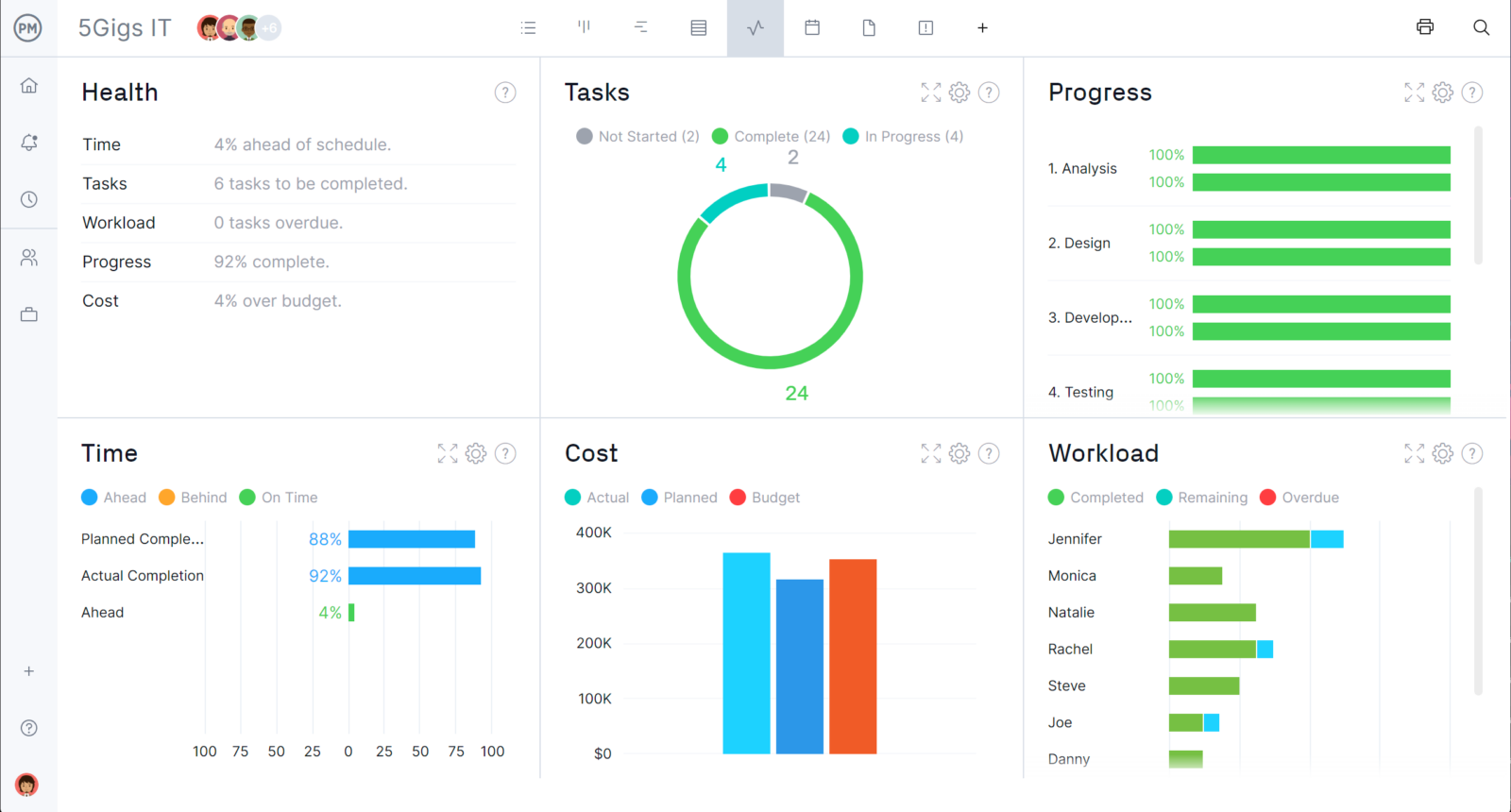
Once people are informed, then you have Gantt charts to formulate your plan, assign team members and track their progress. ProjectManager gives you quality assurance from the start to the finish of your project.
The tracking of quality assurance and its testing requires software that can collect real-time data and provide managers with easy-to-read reports. ProjectManager is online project management tool with features such as real-time dashboards that record and reflect changes as they occur. Get started today for free.

